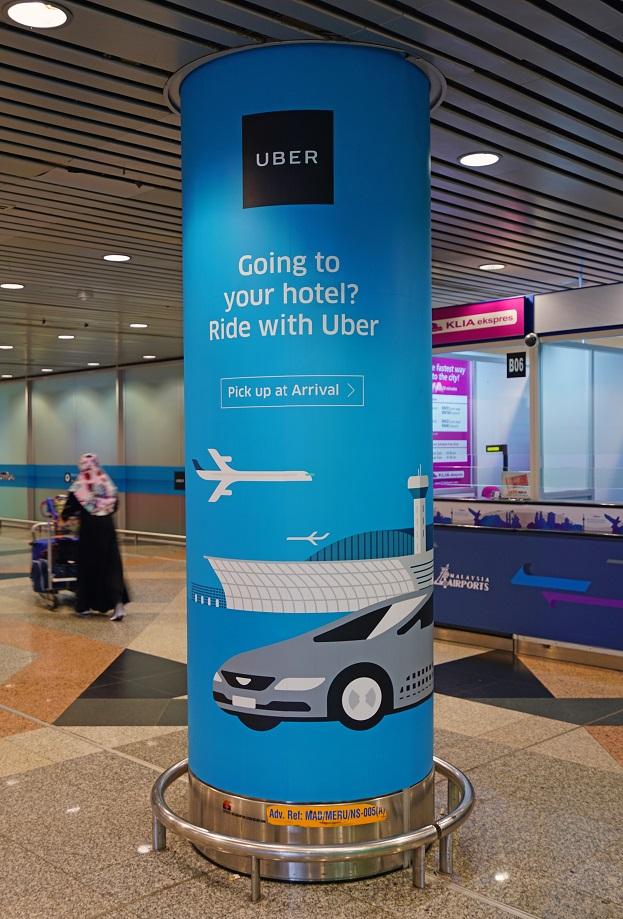INSIGHTS
Navigating the multi-channel world of non-GDS travel content
Travellers using their work mouse or smartphone just like their home remote control can leave a confused manager. Mark Frary explains how to thrive in a multi channel world.
Imagine a world where in order to compare the prices of different brands of baked beans you had to visit a Heinz shop, a Branston shop and as many supermarkets as there are own-brand versions. One thing is certain, you would quickly go off beans.
Unfortunately, for much of business travel’s recent history, that is exactly what you had to do for certain types of product, specifically those that have not been available through the global distribution systems (GDS).

Providers of non-GDS content have recognised the value of clever technology
This non-GDS content has proliferated in the past two decades since the arrival of low-cost carriers which, as part of their low-cost model, choose to distribute their fares through their own web channels in order to save on costs.
Yet low-cost air travel is not the only non-GDS content that travel managers and bookers need to access. Access to hotels, particularly smaller, independent ones, has been always an issue for travel buyers.
The sharing economy has also given rise to a proliferation in travel content that is not available through the GDS – think rooms on Airbnb and Uber as well as the countless lookalikes to these two around the world.
The challenge for travel managers
This non-GDS content has proven irresistible to business travellers – partly because of the huge amount of money that has been spent on marketing them to individuals. The low-cost carriers have been particularly successful in this, positioning themselves as the cheapest option – even though the term “low-cost” really applies to the airline business model rather than the fare itself, a clever marketing twist.
Providers of non-GDS content, such as Uber, have also recognised the value of clever technology, such as user-friendly websites and apps that promise to make the booking experience friendlier and friction-free.
The result of this behaviour is that compliance with travel policy has been under growing threat and travel management companies are increasingly having to operate as aggregators of an ever-growing list of distribution channels.
Take air, for example, where the low-cost airlines have completely broken the short-haul air market model in Europe and many other regions.
FCM Air Product Manager Kavon Bagheri says the rise of low-cost is partly due to a trend for company travel policies to require travellers to book the lowest available fare on short-haul routes.
“While many low-cost carriers (LCCs) have increased the traveller experience with speedy boarding, fast track and even lounge access, the more traditional airlines have arguably reduced their traveller experience by unbundling meals and baggage to try and compete on price point. This has made economy travel on short routes quite comparable between LCCs and traditional airlines.”
Low-cost continues to expand partly through consolidation but also through new models.

Non-GDS content has proliferated since the arrival of low-cost carriers
A crucial point in the accessibility of non-GDS air content is in making it easily available. FCM works very closely with its technology partners to ensure that all content is maximised and presented in an efficient manner, says Bagheri. “The tools that we use allow our consultants to easily explore offerings from LCCs and traditional carriers in one screen,” he says.
Not content with having broken the short-haul markets, LCCs are now eyeing up long-haul markets. Bagheri says “The rise in low-cost supply is quite dramatic with existing carriers increasing routes and aircraft plus new entrants in the market. Norwegian applied for 155 new routes in 2017 and were granted 153 of them and announced Buenos Aires and Singapore as new destinations and will likely announce more in 2018. We then see the traditional carriers making plays into this market with new entrants like IAG’s Level and Air France’s Joon.”
The idea of non-GDS air content should also be considered in the light of IATA’s New Distribution Capability (NDC) initiative which aims to make shopping for air products easier and more transparent.
FCM and parent company Flight Centre Travel Group have been proactively engaged with key NDC players for the last two years to address customer need for access to NDC content.
“NDC will play an increasing role in travel distribution and our priority has been to ensure that our customers benefit positively from the opportunities it presents, as well as ensure the value of the airlines is well represented," says Bagheri.
"We have been working closely with our technology partner Amadeus and major airline groups such as British Airways/Iberia and Air France-KLM to help shape the future of that distribution and look at new ways to integrate airline content into our existing booking platforms. We are very close to integrating NDC content via our core booking systems so that we can define a win-win strategy for our customers and the airlines moving forwards. FCM is proud to be playing a key part in shaping the roadmap for NDC in the travel management space.”

Switching channels
Alexander Blunt is Flight Centre Group’s head of land product, with responsibility for sourcing hotels, apartments, car rental, rail and visa and passport ancillaries across both the corporate and leisure sectors of the company.
Blunt says, “We find ourselves talking about non-GDS content a lot. We have good partnerships with Booking.com, Expedia, GTA and HRS but in the majority of cases, traditional GDS hotel content is what clients still want. For example Booking.com has 1.5 million hotels but when you dig down, a lot of corporate clients don’t need or want that.”
When buyers realise that many of these hotels do not honour loyalty status, are unable to provide a VAT invoice and may not offer a negotiated rate even if you are putting significant spend into their property, the appeal often wanes.
“Clients are all talking to us about this but once you inform them of the differences they generally choose to stick with the GDS model,” he says.
Blunt says that part of what buyers want is not so much the breadth of content but giving the buyer or booker confidence that there is price parity for the traditional GDS content.
The desire for non-GDS content has also dropped following FCM’s introduction of technology from TripBAM. The offering monitors hotel rates booked through the GDS every day until check-in to see if a lower rate is available at which point the existing booking can be cancelled and
the room rebooked at the lower price guaranteeing the client with the best available rate.
“What our travellers want is to be able to book everything in one place, flexible payment options, loyalty and management information,” says Blunt.
Flexibility to meet a corporate’s needs in different markets is also key. “Some clients say we only want to see our preferred hotels and our negotiated rates,” says Blunt. “Others say we want to see that in London but not in Germany, where we want to see HRS content as well. Some don’t want to see GDS content at all in the Middle East.”
A number of the online booking tool partners that work with FCM allow non-GDS content to be aggregated alongside GDS content, making it easier for bookers to compare. Extended stay properties have become more popular too as hotel groups have expanded their brands into these areas, such as Hilton with Homewood and Embassy Suites and Accor with the acquisition of OneFineStay. At the same time, property investors, particularly buy-to-let landlords in the UK, have bought properties to rent them on the long-stay market, using new technology platforms such as Airbnb.
FCM has partnerships with many of the leading providers, including SACO and BridgeStreet.
Online booking tools allow non-GDS content to be aggregated alongside GDS content for easier comparisons
Airbnb’s unapologetic efforts to win over the corporate market have not gone unnoticed and buyers have a duty to consider the growing demands from younger travellers in particular to offer more authentic accommodation choices.
“All of our clients want to talk about AirBnb but it is important to discuss the duty of care risks with buyers and many end up sticking with long-stay apartments,” says Blunt.
However Blunt says that hotel chains are responding to the threat of AirBnb taking their business by refreshing their offerings and launching new brands such as Premier Inn’s hub and Hilton’s Canopy.
“The chains present great offerings in the mid and economy scales that target millennials. If you add in the value-added benefits offered by FCM’s SmartSTAY, such as free WiFi and breakfast, AirBnb becomes less of a discussion,” he says.
For non-GDS content, booking is only one part of the story – data is the other crucial element. Without good data and reporting, corporate buyers will be unable to see and act upon the big picture.
“Data is really, really important,” says Blunt. “TMCs are becoming aggregators and providers of data at a holistic level to allow clients to pin down travel spend exactly and identify where there are gaps and where companies are overspending and underspending.”
For bookings that flow through the online booking tool, this is straightforward. For non-GDS bookings where part of the booking may be offline, this means having defined procedures in place to ensure data flows into FCM Connect suite and HUB portal.
All this means that shopping for non-GDS content, as for baked beans, now requires a lot less time and energy. And that has to be a good thing.